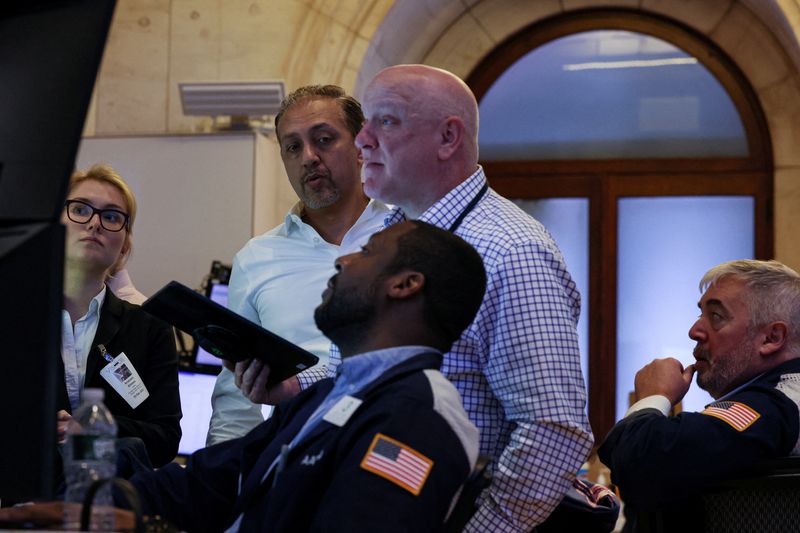By Stephen Culp
NEW YORK (Reuters) -U.S. stocks closed modestly lower on Friday, the last trading day of 2023, capping a robust year-end rally as investors eyed easier monetary policy in the year ahead.
The stock market has seen remarkable upward momentum in the closing months of the year, powering all three major indexes to monthly, quarterly and annual gains.
For the year, all three posted double-digit growth.
"On January of this year, 363 days ago, if I said I think the S&P is going to gain more than 20% in 2023, you would have put me into the slightly nutty category," said Oliver Pursche, senior vice president at Wealthspire Advisors, in New York. "There’s certainly reason to be pleased this year and there's reason for optimism going into 2024."
Even so, all three major U.S. stock indexes ended the session lower.
"There’s really no reason for today's small sell-off," Pursche added. "There's no news that’s driving it."
"I would ascribe it to last-minute portfolio changes, profit taking as we enter the new year, and perhaps some rebalancing."
Smallcaps came to life in the last months of the year, with the Russell 2000 roaring back from a year-to-date loss of 7.1% as of late October to end the year with a 15.1% annual gain.
The S&P 500, the Dow and the Nasdaq have booked nine consecutive weekly gains -- the longest weekly winning streak for the S&P 500 since January 2004, and the longest for the Dow and the Nasdaq since early 2019.
The S&P 500 is still drifting within 1% of its record closing high reached on Jan. 3 2022. Closing above that level - 4,796.56 - would confirm the bellwether index entered a bull market when it touched its bear market trough in October 2022.
It was a tumultuous year marked by the U.S. banking crisis in March, an artificial intelligence stocks boom, oil supply jitters stemming from the Israel-Hamas war and fears that restrictive Fed policy could tilt the U.S. economy into recession.
Falling interest rates helped spark a remarkable year-end rally, which shifted into overdrive in December when the Federal Reserve opened the door to U.S. interest rate cuts in 2024 after a rate hike campaign that helped bring inflation down toward the central bank's 2% annual target.
The Dow Jones Industrial Average fell 20.56 points, or 0.05%, to 37,689.54, the S&P 500 lost 13.52 points, or 0.28%, to 4,769.83 and the Nasdaq Composite dropped 83.78 points, or 0.56%, to 15,011.35.
Of the 11 major sectors of the S&P 500 real estate posted the largest percentage loss. Consumer staples and healthcare were the only gainers.
For the year, technology, communication services, and consumer discretionary were the outperformers, with utilities, energy and consumer staples losing ground.
Among corporate movers, Uber Technologies (NYSE:UBER) fell 2.5% and Lyft (NASDAQ:LYFT) lost 3.5%, following a report that Nomura downgraded the ride-sharing platforms.
Markets will be closed on Monday, Jan. 1 for New Year's Day.
Declining issues outnumbered advancing ones on the NYSE by a 2.46-to-1 ratio; on Nasdaq, a 2.41-to-1 ratio favored decliners.

The S&P 500 posted 31 new 52-week highs and no new lows; the Nasdaq Composite recorded 87 new highs and 53 new lows.
Volume on U.S. exchanges was 10.58 billion shares, compared with the 12.43 billion average for the full session over the last 20 trading days.